#John Tojeiro
Text
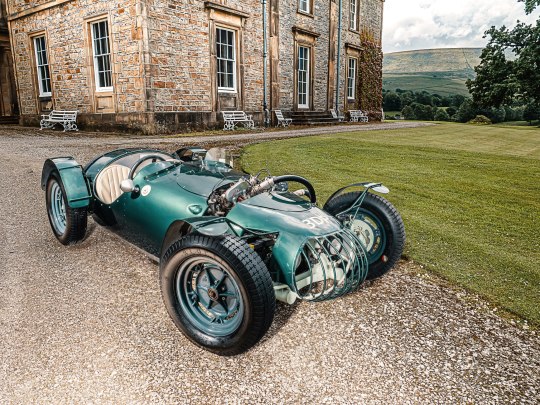


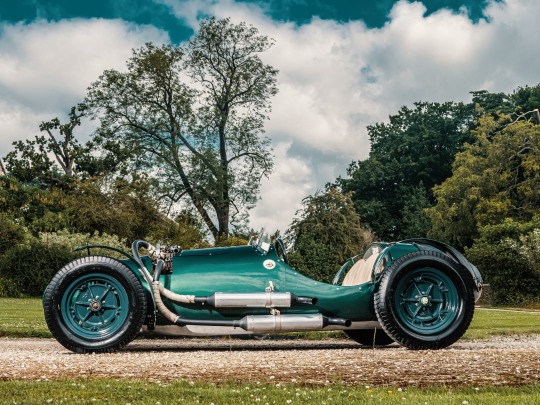
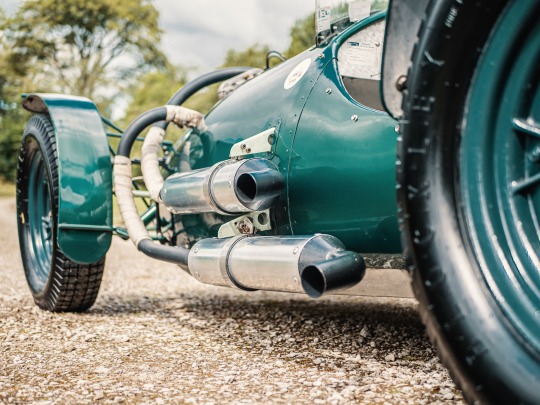
Lister Jap, construite en 1952 par Brian Lister et John Tojeiro, puis pilotée par Archie Scott-Brown. - source Lister Motor Company.
26 notes
·
View notes
Photo

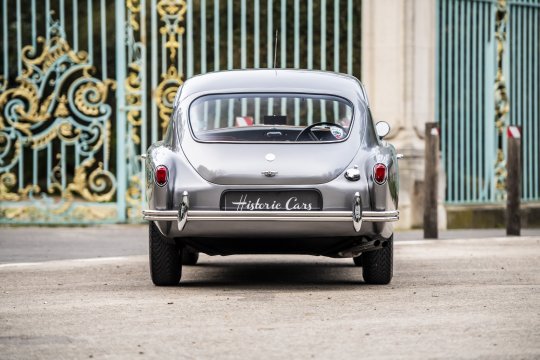







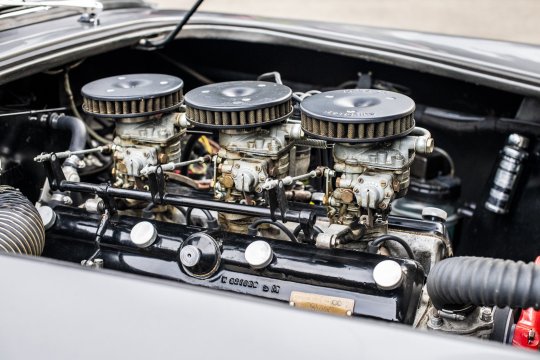
AC Aceca
The small Bristol-powered racer, designed by John Tojeiro in the early 1950s, was a great success in competition with Cliff Davis. AC Cars, renowned for its sporty models but with an ageing range, was looking for a new model and took a keen interest in Tojeiro's small car and decided to put it into production in 1954, under the name Ace. The Tojeiro bodywork was virtually a carbon copy of the beautiful Touring designed Ferrari 166 MM barchetta and was carried over to the Ace with minor modifications. It was based on a ladder chassis with independent suspensions, inspired by the Cooper that John Tojeiro had also designed.
However, AC did not use the Bristol engine for its model, preferring to stick with the good old 2 litre long stroke six cylinder engine with overhead camshaft. It was designed in 1919 and its modest 80 hp was a bit too much for a modern sports car.
The engine was increased to 100 hp, which gave the Ace a respectable, but not spectacular, performance. A very attractive and original fastback coupé version, designed by Alan Turner and named Aceca, was unveiled at Earls Court in London in 1954. Its body was constructed from hand-formed aluminum sheet and was supported by a tubular truss. To reduce the resonance box effect in the passenger compartment, AC mounted the components on rubber blocks. The tubular chassis was more solidly built than that of the Ace.
The Aceca was a very attractive, light and well powered GT car. The Ace and Aceca helped to restore AC's pre-war notoriety among sports connoisseurs. The Ace and Aceca underwent very few changes during their careers, apart from the replacement of the engine in 1956, when the more powerful 2-litre Bristol six-cylinder (up to 130 bhp) became available. Towards the end of production, the excellent 2.6 litre Ford Zephyr engine, light and small for its displacement, was finally adopted. The combination of a stiff chassis that held the road well and an interesting power-to-weight ratio - with the Bristol engine the car was already reaching 190 km/h - allowed the Ace version to achieve many racing successes in the production Sport class, its best result being seventh place overall and first in class at Le Mans in 1959.
The rest of the story is known. This well-born car was chosen by Carroll Shelby to install a Ford V8 in its specially strengthened chassis, giving birth to the mythical Cobras which definitively took AC out of a restricted circle of connoisseurs and gave it international recognition.
#AC Aceca#John Tojeiro#Cliff Davis#Ferrari 166 MM#cooper#ace#Bristol#Ford Zephyr#Le Mans#Carroll Shelby#Cobra#Ford V8
48 notes
·
View notes
Text
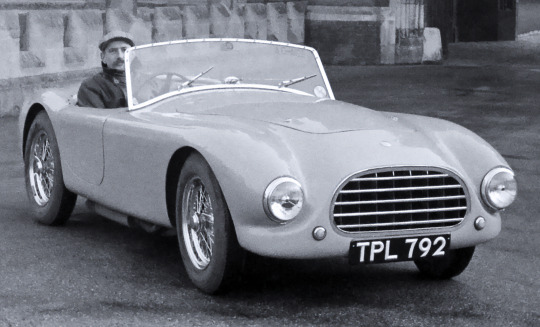


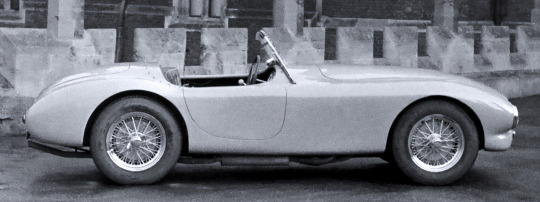
AC-Tojeiro Ace Prototype, 1953. John Tojiero was producing sports cars on a limited scale when he approached AC with his his latest prototype. The owners of the AC Motor Company were looking to modernize their products and picked up Tojiero's proposal fitting it with an AC engine and other AC parts. It was presented on the AC stand at the 1953 Earls Court Motor Show having been given the name "Ace." The car was put into production at AC's Thames Ditton factory and in 1956 gained a Bristol 2.0 6 cylinder engine. When Bristol stopped making the engine in 1961, AC's owners were approached by Carroll Shelby to use a Ford V8 in the Ace chassis, producing the first AC Cobra in 1962.
#AC#AC Ace#1953#prototype#AC-Tojeiro Ace#John Tojiero#sports car#British Sports Car#1950s#AC Motor Company#AC Cobra#first of it kind
145 notes
·
View notes
Text
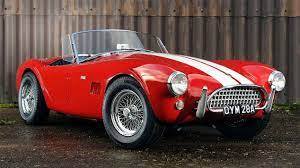
1963 AC SHELBY COBRA
1963 AC SHELBY COBRA 4.7-LITRE MARK II ROADSTER
REGISTRATION NO. OYM 28A
CHASSIS NO. CSK2116
ENGINE NO. CSX2116
Footnotes
Rightly regarded as one of the all-time great classic sports cars, the muscular, fire-breathing Cobra succeeded in capturing the hearts of enthusiasts like few of its contemporaries. Only 1,000-or-so Cobras of all types were built between 1962 and 1967, but such was the model's enduring popularity that production was resumed in 1982 under the auspices of Brooklands-based Autokraft.
Convinced that a market existed for an inexpensive sports car combining European chassis engineering and American V8 power, Le Mans-winning Texan racing driver Carroll Shelby concocted an unlikely alliance between AC Cars and the Ford Motor Company. The former's Ace provided the simple twin-tube chassis frame - designed by John Tojeiro - into which was persuaded one of Ford's lightweight, small-block V8s. It was discovered that the latter was lighter than the six-cylinder Ford Zephyr unit that AC was using, yet with vastly greater potential. To cope with the projected power increase, the Ace chassis was strengthened with heavier gauge tubing and supplied fitted with four-wheel disc brakes. Weighing a mere 1.5cwt more than a Bristol-engined Ace yet endowed with double the power and torque, the Cobra turned in a breathtaking performance, racing to 60mph in 4.4 seconds and reaching the 'ton' in under 12, exceptional figures by early 1960s standards and none too shabby even today.
The 260ci (4.2-litre) prototype first ran in January 1962, with production commencing later that year. Exclusively for the USA initially, Cobras - minus engines - were sent from England to be finished off by Shelby in California, and it was not until late in 1963 that AC Cars in Thames Ditton got around to building the first fully finished cars to European specification.
After 75 Cobras had been built with the 260ci engine, the more powerful 289ci (4.7-litre) unit was standardised in 1963. Rack-and-pinion steering was the major MkII up-date; then in 1965 a new, stronger, coil-suspended MkIII chassis was introduced to accommodate Ford's 427ci (7.0-litre) V8, an engine that in race trim was capable of producing well in excess of 400bhp. Wider bodywork, extended wheelarch flares and a bigger radiator intake combined to create the definitive - and much copied - Cobra MkIII look. Keeping ahead of the competition on the racetrack had been the spur behind Shelby's adoption of the 427 engine, but some MkIIIs to 'street' specification came with Ford's less powerful 428ci hydraulic-lifter V8.
But for Brian Angliss, the Cobra story would have ended in 1967. The Autokraft boss had built up a business restoring Cobras and supplying parts, and in the early 1980s acquired the rights to the AC name plus a quantity of jigs and tooling from the old Thames Ditton factory. Keeping the overall style of the MkIII, Autokraft produced the MkIV, which was appropriately updated to meet current legislation and powered by a 'Federalised' Ford 5.0-litre V8 engine. Around 480 were built.
Chassis number 'CSX2116' was invoiced to Shelby American on 16th April 1963 and shipped to Los Angeles three days later aboard the 'SS Loch Gowan'. Invoiced on 18th June 1963 to Burton Motors of Sacramento, California, the Cobra was sold new to a local doctor who used it for a few years before giving it to his daughter. She used the car as daily transport for several years before the clutch failed, at which time it was sold to Steve Dangremond of Santa Rosa, California. The Cobra was advertised for sale by Mr Dangremond in late 1977 and bought by Dr Grant Hill of Chotoka, Alberta. Dr Hill fitted Weber carburettors and raced 'CSX2116', eventually trading it to Fred Yule in Portland, Oregon. At that time, the car was still finished in its original colour scheme of dark blue and retained its original black leather interior.
'CSX2116' returned to the UK in the late 1980s and was advertised through Hampson's Ltd, by which time it had been refinished in red and fitted with a full-width roll bar. Subsequent owners in England were Dr Carlos Barbot, Trojan boss Peter Agg and Formula 1 racing driver Rupert Keegan. 'CSX2116' was last restored in 1988, records on file indicating that an extensive mechanical restoration was undertaken at this time. The car still retains its original black leather interior though the Weber carburettors have gone, replaced by an easier to maintain four-barrel Holley. There is considerable additional accompanying documentation including correspondence between previous owners, a copy of the original bill of sale, Shelby American Automobile Club letter of authentication, FIA papers and Swansea V5 registration document. The car has belonged to the current owner since 2006.
Early Cobras are offered for sale only rarely and this example represents a wonderful opportunity to acquire a fine example of this classic of Anglo-American sports car design.
90 notes
·
View notes
Photo
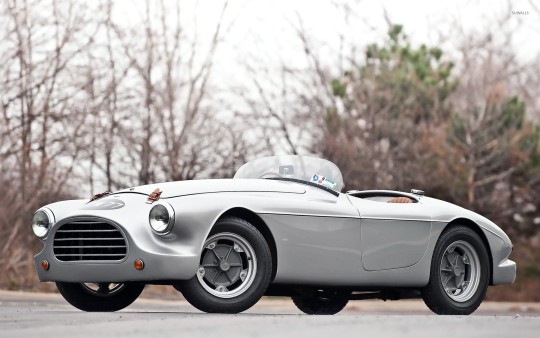
John Tojeiro Wallpaper
0 notes
Photo

The Tojeiro California Spyder Is John Tojeiro’s One and Only Front-Engine Race Car To Ever Exist #carsandbikes #luxury #luxurylifestyle #luxurylife #luxurystyle #lifestyle #thexpensive
0 notes
Photo

John Tojeiro was a genius. http://ift.tt/2sEcH6G
7 notes
·
View notes
Text
The Tojeiro California Spyder Is John Tojeiro’s One and Only Front-Engine Race Car To Ever Exist
Accompanied by a thorough history file containing letters, dyno test sheets, a copy of race results, a copy of the racing logbook, and photographs, RM Sotheby’s presented a unique post-war racing car conceived by esteemed engineer John Tojeiro, in its Open Roads, North America Auction, earlier this year. The event which took place from 23rd to 30th July 2020, celebrated an exemplary era in the automobile industry, where an auto enthusiast’s passion and drive were not determined by what they could buy from an established manufacturer, but rather what they could create with their own two hands.
The Tojeiro California Spyder Is John Tojeiro’s One and Only Front-Engine Race Car To Ever Exist
Born in Portugal, John Tojeiro, began his career, acquiring skills as he served as an engineer in the Fleet Air Arm during WW2. Motivated by his newfound knowledge, Tojeiro quickly branched out into developing his own cars and chassis. Improving purely based on trial and error, the designer eventually clenched success in his own right, through signing an agreement to use one of his designs for the underpinnings of the AC Ace.
Regarded a poster-car of the time, the Tojeiro California Spyder, inspired by both the Ferrari 250 California spider and Ecurie Ecosse’s Le Mans-competing Jaguars, features a tube-frame chassis, coil springs, concentric tubular shock absorbers, and a De Dion read-end. Despite having been conceptualised in 1959, it wasn’t until much later that the car ever saw light of day, as innumerable pressing projects diverted the attention of its creator.
While John Tojeiro never completed the project himself, the car’s eventual constructed was entrusted into the hands of American auto-archaeologist, John Muller, who had noticed the chassis hanging in the rafters of the shop—and knew he had to have it. Upon purchase, the Tojeiro California Spyder was swiftly shipped to Muller’s hometown in Kansas City, Missouri, where the auto-archaeologist incorporated a 302-cubic-inch GMC inline six-cylinder engine and a Muncie “rock crusher” four-speed manual transmission, into the car’s preserved, original components and the original chassis – which resulted in the 300-plus horsepower, 325-foot-pound monster we admire today.
The post The Tojeiro California Spyder Is John Tojeiro’s One and Only Front-Engine Race Car To Ever Exist appeared first on LUXUO.
from Cars and Bikes – LUXUO https://ift.tt/30yZW0z
via IFTTT
0 notes
Text
The Long-Lost 1959 Tojeiro California Spyder - Only One Was Ever Made
The Long-Lost 1959 Tojeiro California Spyder – Only One Was Ever Made
The 1959 Tojeiro California Spyder is a car that was designed and partially built in the late 1950s before being placed into storage for years until it was completed decades later on the other side of the world.
If you have even a passing interest in motorsport the name John Tojeiro is almost certainly already familiar to you, he was a revolutionary engineer who built some remarkable and…
View On WordPress
0 notes
Text
AC COBRA, UN BRITÁNICO CON CORAZÓN AMERICANO.
Texto: Oliver Web.
La lista de éxitos del AC Cobra en competición fue larga, pero este automóvil no solo conquistaba circuitos, sino que también corazones, como el de la estrella de Hollywood e icono de estilo masculino Steve McQueen.
Su predecesor, bautizado como Ace fue un modelo ideado por John Tojeiro quien vendió su patente de un deportivo artesanal ligero, ideal para circuito a la famosa fabricante de automóviles AC Cars. El coche resultó todo un éxito que llamó la atención del piloto de carreras americano Carroll Shelby quien se retiraba con aplausos de los circuitos para dedicarse a los negocios en Ford. Así, tras un acuerdo mutuo entre las dos compañías, nacía el AC Cobra, un automóvil legendario con cuerpo británico y corazón americano.
La presentación de AC Cobra que se llevó a cabo en el Salón de París de 1962 fue un triunfo. Con menos de 1000 kilos, 952 para ser exactos, y con un motor V8 que llegaba a los 260 CV de potencia Cobra era capaz de alcanzar 246 km/h. El nuevo niño de AC Cars se convertía en uno de los favoritos de la GT de su época. Shelby homologó esta nueva joya automovilística de la que fue partícipe según la normativa FIA para poder correr en carreras de nivel internacional y volvió a las pistas. Gracias a ligeros cambios el AC Cobra se convertía en coche de carreras.
No fueron pocos los amantes de automación que se rindieron ante las suaves líneas del AC Cobra que en apenas cuatro años de su producción (1962-1966) logró convertirse en leyenda, dando lugar a un sinfín de réplicas y recreaciones de otras marcas, entre las que destaca Superformance y sus MkII Slab Side, MkII FIA y MkIII. Pero nada como el auténtico Cobra, rápido y escurridizo, un mito.
0 notes